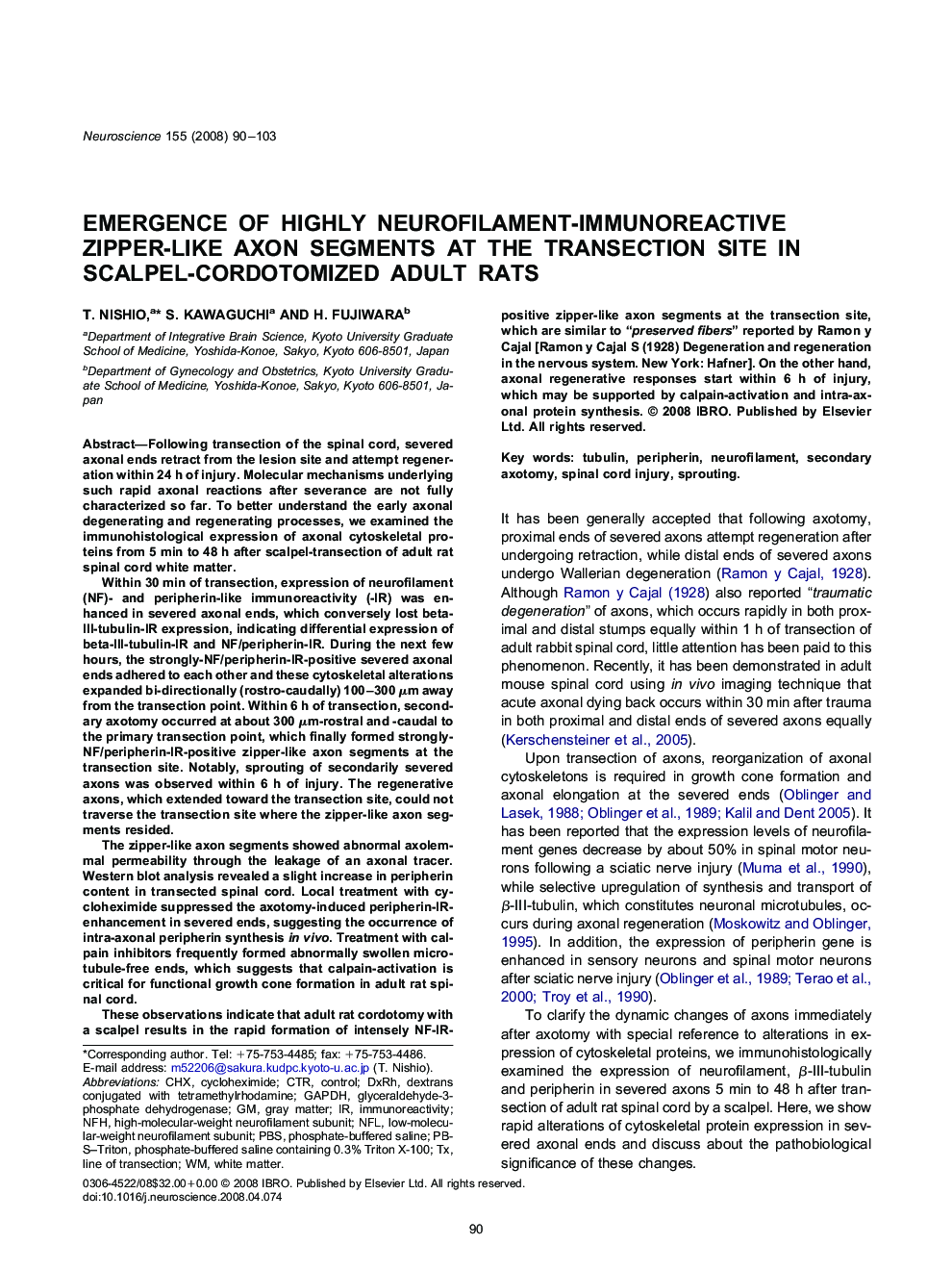| کد مقاله | کد نشریه | سال انتشار | مقاله انگلیسی | نسخه تمام متن |
|---|---|---|---|---|
| 4340481 | 1295798 | 2008 | 14 صفحه PDF | دانلود رایگان |

Following transection of the spinal cord, severed axonal ends retract from the lesion site and attempt regeneration within 24 h of injury. Molecular mechanisms underlying such rapid axonal reactions after severance are not fully characterized so far. To better understand the early axonal degenerating and regenerating processes, we examined the immunohistological expression of axonal cytoskeletal proteins from 5 min to 48 h after scalpel-transection of adult rat spinal cord white matter.Within 30 min of transection, expression of neurofilament (NF)- and peripherin-like immunoreactivity (-IR) was enhanced in severed axonal ends, which conversely lost beta-III-tubulin-IR expression, indicating differential expression of beta-III-tubulin-IR and NF/peripherin-IR. During the next few hours, the strongly-NF/peripherin-IR-positive severed axonal ends adhered to each other and these cytoskeletal alterations expanded bi-directionally (rostro-caudally) 100–300 μm away from the transection point. Within 6 h of transection, secondary axotomy occurred at about 300 μm-rostral and -caudal to the primary transection point, which finally formed strongly-NF/peripherin-IR-positive zipper-like axon segments at the transection site. Notably, sprouting of secondarily severed axons was observed within 6 h of injury. The regenerative axons, which extended toward the transection site, could not traverse the transection site where the zipper-like axon segments resided.The zipper-like axon segments showed abnormal axolemmal permeability through the leakage of an axonal tracer. Western blot analysis revealed a slight increase in peripherin content in transected spinal cord. Local treatment with cycloheximide suppressed the axotomy-induced peripherin-IR-enhancement in severed ends, suggesting the occurrence of intra-axonal peripherin synthesis in vivo. Treatment with calpain inhibitors frequently formed abnormally swollen microtubule-free ends, which suggests that calpain-activation is critical for functional growth cone formation in adult rat spinal cord.These observations indicate that adult rat cordotomy with a scalpel results in the rapid formation of intensely NF-IR-positive zipper-like axon segments at the transection site, which are similar to “preserved fibers” reported by Ramon y Cajal [ Ramon y Cajal S (1928) Degeneration and regeneration in the nervous system. New York: Hafner]. On the other hand, axonal regenerative responses start within 6 h of injury, which may be supported by calpain-activation and intra-axonal protein synthesis.
Journal: Neuroscience - Volume 155, Issue 1, 31 July 2008, Pages 90–103